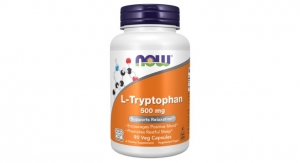By Mike Montemarano, Associate Editor07.18.22
The number and complexity of dietary ingredients and supplements have grown considerably in the past 20-30 years. Fraud and adulteration practices have also become more sophisticated to evade detection, underscoring the importance of proper testing protocols and certification standards that confirm legitimacy, offering brands and consumers assurance their products are safe and of high-quality.
“Our ITC Insights research found that supplement consumers rank quality certifications and seals on labels/website second, only behind consistent product quality, so consumer demand for these attributes is increasing,” said Len Monheit, CEO of Industry Transparency Center (formerly known as Trust Transparency Center).
“Industry needs to hold each other accountable more and we’re increasingly starting to see that,” he added. “Retailers are the ultimate gatekeepers in brick and mortar for making sure brands and manufacturers are following the rules, and the best of them have high quality and vetting standards. More incentivizing is required though, and it’s probably a mixture of carrot and stick—noting those that go above and beyond, and calling out deficiencies.”
Still, there are a number of companies that “don’t know what they don’t know,” Monheit said. “There’s also this tendency to rush things, but labs are working hard to keep up and expand with the demand, and there are reputable third-party testing labs that do great work. There has been significant consolidation in the lab industry so that sometimes leads to complications.”
There are a myriad of reasons for how testing is selected and performed, according to John Travis, technical manager, NSF Certified for Sport. “Some price-shop and purchase the lowest-price testing. Some use multiple laboratories and select the results that best fit their expected outcomes. Finally, some partner with a third-party lab, like NSF, to determine the appropriate test to verify product quality.”
Sandra Lee, CEO of NJ Labs, said there are organizations working on standardizing and improving the testing requirements for the supplement industry. “However, quality is a process and there is room for growth. A multitude of incidents reported in the press across all different product categories should be of concern to consumers, and the fact that there are so many incidents in the news alone should be enough to alert consumers to have a ‘buyer beware’ mentality.”
Across the board, stakeholders have a lot of work to do before proper product testing is adequately incentivized, according to Elan Sudberg, CEO of Alkemist Labs.
“Over 10 years ago, the FDA gifted the industry somewhat turbid regulations,” Sudberg said. “Unclear and prime for willfully ignorant misinterpretation, the cGMPs [current Good Manufacturing Practices] fail to instruct the industry on what testing technology to deploy, or when. And so, the unscrupulous or those with persnickety CFOs at the helm choose the low road and race to the bottom in the name of profit. Unfortunately, testing is widely seen as a burden, or worse, just an expense on the P&L (profit and loss statement). I’ve made it my quest for the last seven years to change the minds of industry to see proper testing and transparency as a marketing opportunity that can help recover the true costs of quality.”
Consumers are learning to be less trusting and to do research on companies and products before they buy something they plan to ingest, Sudberg added. “Consumers are like dry sponges waiting for more data to help them make their purchasing choice […] consumers are itching to incentivize the proper testing of products, but will never know how if no one shares their quality.”
Trusted third-party testing sources can be a partner who is familiar with the weaknesses that criminals could be trying to exploit, according to Travis.
“You need to find a lab which has the experience in navigating the constantly moving target of adulteration. There are so many ways cheaters can cheat, so you have to work with labs that know all the tricks, and can test to catch them,” Sudberg said. “The usual suspects for adulteration have always been the fitness/muscle-building arena, sexual health, and weight loss.”
Above all, Monheit said, the most difficult adulterants to test for tend to be the ones that are used most infrequently. “Trace amounts of active drugs can be difficult to detect unless you are looking for them. Without the right botanical tools, you can sometimes miss species adulteration, especially when the typically sought markers are similar. The presence of synthetics is difficult to detect without the right equipment.”
Overall, many companies are working on the right steps to ensure quality, Lee said. “However, as regulations are not as stringent in the supplement industry, and with the supply chain getting worse, additional steps are required. Ingredients that are in short due to supply chain issues, and companies sourcing ingredients in a rush can all contribute to the risk of adulteration.”
The supply chain issues prevalent across the globe today are certainly leaving many companies more vulnerable to intentional or unintentional adulteration than they may realize, Sudberg concurred, especially with immune health ingredients, which are still experiencing high demand. No amount of testing for adulteration should be seen as too thorough, he noted.
“In our 25 years of testing the industry’s botanicals and fungi we’ve seen it all, or so we think,” Sudberg said. “It’s rare these days that we find something that surprises us, primarily because our clients are the best of the best and they themselves have sophisticated systems in place to avoid tripping on adulterants even before they send samples to us. That said, I have heard of APIs [active pharmaceutical ingredients] being hidden inside the capsule of a supplement. The labs generally don’t test the capsules. They test what’s inside. That took some serious detective work from a sister lab, Flora Research, to discover that.”
While no single test for adulterants is especially arduous, expensive, or sophisticated, ensuring a product is adulterant-free can require a relatively lengthy series of multiple tests, leading to higher costs.
“It’s not that there are forms of adulteration that are difficult to detect, but to qualify raw materials there is usually a set of tests that is required to confirm identity and purity. Unfortunately, in order to stay within budget, most companies will only do one or two tests and skip the rest,” Lee said.
Tests that are designed to identify ingredients are generally not appropriate for identifying an adulterant, “but should inform that adulteration is present,” Travis said. “For example, suppose we have a method for identifying bilberry ingredient with a specification of 95% bilberry anthocyanins. When applying that method to an ingredient with 80% bilberry anthocyanins, the test should provide a negative result.”
Labs are still tasked with setting their own analytical standards for a wide frontier of novel dietary ingredients, complex supplement formulas, and raw materials for which no monograph is yet publicly available. According to Travis, there may indeed be supplements for which there are no methods to measure an ingredient in the finished product.
“A test method should have a well-defined scope of applicability,” he said. “It is fit for purpose when used within that scope. A scope of applicability is not static. It can be extended, but the performance of scope extensions must be evaluated. Open dialogue about one’s product or ingredient with whomever is performing testing is vital. At NSF, we encourage our clients to provide key information about the product or ingredient and ask us important questions about the testing to learn if it’s appropriate.”
Take, for example, identity testing of Ginkgo leaf, said Sudberg. “It is green and has compounds that are commonly shared among other green leaves. If you only looked for green leaf features to identify it, you’d be using the logical fallacy of ‘Appeal to Ignorance’. This is common with the tricorder-like testing equipment (FTIR, Light boxes, scanning devices) that are being sold as a lab in a box. You need specificity to pick out a Ginkgo from green tea by comparing it with other confirmed examples of Ginkgo using the right instruments. Another example would be to positively ID green tea based on the presence of caffeine alone. We know that caffeine is not unique to that plant and to lean on that chemical alone to confirm identity would be an error.”
When it comes to adherence to cGMPs, special attention should be given to overseas suppliers or companies that are less frequently inspected by FDA before exporting to the U.S., said Lee.
Additionally, Sudberg noted the risks of not testing finished products for label specifications, a key shortcoming within the industry. “Finished product specs are one of the points of vulnerability in the industry, because too many companies don’t want to invest in having custom testing methods developed for their unique formulas,” said Sudberg.
Complicated and untestable finished products should be left in the R&D lab, he added. “So many formulas are created without testing in mind. Between fairy dusting just to get an ingredient on a label with no qualms about sub-therapeutic amounts, and starting with inferior quality ingredients, we are giving the testing exemption called ‘testing by input’ found in 21 CFR part 111.75(d)(1) a purpose.”
This section of the Code of Federal Regulations exempts finished products from testing requirements if no reasonable test currently exists for said finished products.
“Reminder, a calculator will not catch an adulterant. If consumers found out that you aren’t testing what they are actually taking, I am confident they’d lose confidence,” said Sudberg. “We as an industry need to do better at raw ingredient qualification by avoiding the tricorders, and stop using ingredients below therapeutic dose.”
Final Certificates of Analysis (CoAs) based on input of ingredient tests, and not a test on the sum of a product’s parts, is a glaring industry problem, Monheit said. “It all starts with contract manufacturers. Brands need to make sure their CMs are following the rules and testing appropriately; they can’t skip testing or work with CMs that are trying to bend the rules. This is hugely problematic where ingredients are unstable together and might not be there in input quantities. Lack of testing of finished products is also an issue when there is not uniformity, so parts of a batch may have higher concentrations than others. This goes directly back to the manufacturer, and a question should be, ‘how do you ensure and measure manufacturing uniformity?’”

“We really wish there was a better ‘Quality 101’ toolkit,” Monheit said. “As a starter at brand level, someone within the brand needs to understand every aspect of what a CofA means; and if they don’t know they need a testing partner to walk them through it, versus simply filing it away and checking it off their to-do list. Really, that’s the key: talking to those reviewing the testing parameters, test by test, including the instrument limitations, and also the difference between testing for potency and testing for impurities.”
Sudberg advised companies to work with a lab that makes the time to walk you through what you just paid for. “Better yet, work with a lab who produces two types of CofAs: one for the nerds and one for the consumers so you can take that already-paid-for testimony of quality and efficacy and monetize it.”
Sharing information about quality is effectively, “the last value proposition,” he said. “We can’t say our dietary supplements work without spending a gazillion dollars on clinical research studies. So, the only thing left to brag about is quality, which infers efficacy. Consumers have been skeptical of our industry for decades. They are also much more demanding about transparency. Finally, up-and-coming brands and a few major players who have nothing to hide are sharing their quality in their marketing materials.
“If I had a dollar for every label that says ‘lab tested’ but fails to show actual data, I’d have a lot of money,” Sudberg continued. “If you are doing the right testing, you should share the data those tests produce.”
Businesses should understand the results of tests conducted on their products, and communicate positive findings truthfully to the end consumer in a way that they can understand.
Further, a growing list of retailers including Amazon and CVS have initiated their own quality programs requiring quality and compliance tests, with more retailers sure to follow. While organizations like the Global Retailer and Manufacturer Alliance are seeking to harmonize retailer standards, fit-for-purpose testing for a patchwork of unique retail standards today is complicated.
When it comes to due diligence, it’s important to ensure that those testing your products have FDA-registered facilities and that they follow Good Laboratory Practices (GLPs). It is expected that a testing facility could provide potential clients with an Establishment Inspection Report (EIR), which would contain this information as reported by the agency after an inspection is performed.
“EIR is comprehensive and can give you a snapshot picture of how the testing labs scored against regulations,” Lee said. “Quality testing can be very expensive and testing methods can be complex. Understanding what your product’s needs are and how to appropriately test ingredients and products can be a challenge. The best way to mitigate risk is by asking questions.”
Sudberg also recommended searching for prior lab names before acquisition to check for FDA warning letters, or FDA 483s, a notice of potential regulatory problems in inspections. Further, double-check to ensure that any accreditation is accurate and the most relevant to the ingredient being tested. There is no substitute for an in-person audit, Sudberg said, and there’s no harm in challenging potential labs by sending samples with known quality issues to see if they can catch any tricks.
Carbon-14 testing, popularized for its archaeological use in dating organic materials, can be used to determine whether vitamins or botanicals like curcumin are of natural origin or, as a cheaper alternative, synthesized from fossil resources like petroleum.
A study published this year (You, H. et al., Food Chemistry, 2022) by the Global Curcumin Association in conjunction with Beta Analytic and Eurofins indicated that carbon-14 should be added to HPLC (high-performance liquid chromatography) as a best practice, Monheit noted.
Meanwhile, there have been mixed opinions regarding the utility of DNA testing, which was infamously brought into the spotlight in 2015 when then New York Attorney General Eric Schneiderman accused GNC, Walmart, Target, and Walgreens of selling herbal products which allegedly didn’t contain labeled substances or were found to contain ingredients not on product labels, according to DNA barcode tests that weren’t shared publicly.
While DNA testing may be appropriate and relevant in some cases for raw materials, many in the industry were skeptical of its use for finished products, since extracts are not appropriate carriers and may denature DNA if any is still present.
“Carbon-14 testing might make sense when you have a botanical that is sometimes adulterated with a synthetic, because you don’t want to be claiming your product is extracted from turmeric when it’s from petroleum, for example,” said Sudberg. “And we all saw the ridiculous situation created by misuse of DNA testing, which I remain skeptical about. When all you have is a hammer, everything starts looking like a nail, and so lab nerds with sophisticated instruments need to deploy all they have and make a purpose to support the need of their sophisticated instrument. We’re very comfortable using universally accepted, tried and true instruments, and our reputation for excellent testing is a testament to their reliability.”
Still, there is a market for advanced molecular diagnostics in the supplements industry. Purity-IQ, for instance, provides identity and consistency testing for probiotics and botanicals, with emerging technologies such as genomic (DNA) and NMR (nuclear magnetic resonance) technologies as part of its third-party certification program.
To date, the company, which has ISO:17025 certifications for its laboratories, said it has a global registry with a library of biological reference materials for more than 450 botanical species and over 75 probiotic strains.
Mike Montemarano has been the Associate Editor of Nutraceuticals World since February 2020. He can be reached at MMontemarano@RodmanMedia.com.
“Our ITC Insights research found that supplement consumers rank quality certifications and seals on labels/website second, only behind consistent product quality, so consumer demand for these attributes is increasing,” said Len Monheit, CEO of Industry Transparency Center (formerly known as Trust Transparency Center).
“Industry needs to hold each other accountable more and we’re increasingly starting to see that,” he added. “Retailers are the ultimate gatekeepers in brick and mortar for making sure brands and manufacturers are following the rules, and the best of them have high quality and vetting standards. More incentivizing is required though, and it’s probably a mixture of carrot and stick—noting those that go above and beyond, and calling out deficiencies.”
Still, there are a number of companies that “don’t know what they don’t know,” Monheit said. “There’s also this tendency to rush things, but labs are working hard to keep up and expand with the demand, and there are reputable third-party testing labs that do great work. There has been significant consolidation in the lab industry so that sometimes leads to complications.”
There are a myriad of reasons for how testing is selected and performed, according to John Travis, technical manager, NSF Certified for Sport. “Some price-shop and purchase the lowest-price testing. Some use multiple laboratories and select the results that best fit their expected outcomes. Finally, some partner with a third-party lab, like NSF, to determine the appropriate test to verify product quality.”
Sandra Lee, CEO of NJ Labs, said there are organizations working on standardizing and improving the testing requirements for the supplement industry. “However, quality is a process and there is room for growth. A multitude of incidents reported in the press across all different product categories should be of concern to consumers, and the fact that there are so many incidents in the news alone should be enough to alert consumers to have a ‘buyer beware’ mentality.”
Across the board, stakeholders have a lot of work to do before proper product testing is adequately incentivized, according to Elan Sudberg, CEO of Alkemist Labs.
“Over 10 years ago, the FDA gifted the industry somewhat turbid regulations,” Sudberg said. “Unclear and prime for willfully ignorant misinterpretation, the cGMPs [current Good Manufacturing Practices] fail to instruct the industry on what testing technology to deploy, or when. And so, the unscrupulous or those with persnickety CFOs at the helm choose the low road and race to the bottom in the name of profit. Unfortunately, testing is widely seen as a burden, or worse, just an expense on the P&L (profit and loss statement). I’ve made it my quest for the last seven years to change the minds of industry to see proper testing and transparency as a marketing opportunity that can help recover the true costs of quality.”
Consumers are learning to be less trusting and to do research on companies and products before they buy something they plan to ingest, Sudberg added. “Consumers are like dry sponges waiting for more data to help them make their purchasing choice […] consumers are itching to incentivize the proper testing of products, but will never know how if no one shares their quality.”
Adulteration
Economically-motivated adulteration can take place at many links along the supply chain, as bad actors develop sophisticated ways to slip past testing.Trusted third-party testing sources can be a partner who is familiar with the weaknesses that criminals could be trying to exploit, according to Travis.
“You need to find a lab which has the experience in navigating the constantly moving target of adulteration. There are so many ways cheaters can cheat, so you have to work with labs that know all the tricks, and can test to catch them,” Sudberg said. “The usual suspects for adulteration have always been the fitness/muscle-building arena, sexual health, and weight loss.”
Above all, Monheit said, the most difficult adulterants to test for tend to be the ones that are used most infrequently. “Trace amounts of active drugs can be difficult to detect unless you are looking for them. Without the right botanical tools, you can sometimes miss species adulteration, especially when the typically sought markers are similar. The presence of synthetics is difficult to detect without the right equipment.”
Overall, many companies are working on the right steps to ensure quality, Lee said. “However, as regulations are not as stringent in the supplement industry, and with the supply chain getting worse, additional steps are required. Ingredients that are in short due to supply chain issues, and companies sourcing ingredients in a rush can all contribute to the risk of adulteration.”
The supply chain issues prevalent across the globe today are certainly leaving many companies more vulnerable to intentional or unintentional adulteration than they may realize, Sudberg concurred, especially with immune health ingredients, which are still experiencing high demand. No amount of testing for adulteration should be seen as too thorough, he noted.
“In our 25 years of testing the industry’s botanicals and fungi we’ve seen it all, or so we think,” Sudberg said. “It’s rare these days that we find something that surprises us, primarily because our clients are the best of the best and they themselves have sophisticated systems in place to avoid tripping on adulterants even before they send samples to us. That said, I have heard of APIs [active pharmaceutical ingredients] being hidden inside the capsule of a supplement. The labs generally don’t test the capsules. They test what’s inside. That took some serious detective work from a sister lab, Flora Research, to discover that.”
While no single test for adulterants is especially arduous, expensive, or sophisticated, ensuring a product is adulterant-free can require a relatively lengthy series of multiple tests, leading to higher costs.
“It’s not that there are forms of adulteration that are difficult to detect, but to qualify raw materials there is usually a set of tests that is required to confirm identity and purity. Unfortunately, in order to stay within budget, most companies will only do one or two tests and skip the rest,” Lee said.
Tests that are designed to identify ingredients are generally not appropriate for identifying an adulterant, “but should inform that adulteration is present,” Travis said. “For example, suppose we have a method for identifying bilberry ingredient with a specification of 95% bilberry anthocyanins. When applying that method to an ingredient with 80% bilberry anthocyanins, the test should provide a negative result.”
Fit for Purpose
Organizations such as the United States Pharmacopoeia (USP), the American Botanical Council‘s Botanical Adulterants Prevention Program (BAPP), the American Herbal Products Association (AHPA), and others provide a wealth of publicly-available monographs and literature on the appropriate tests for dietary ingredients and supplements.Labs are still tasked with setting their own analytical standards for a wide frontier of novel dietary ingredients, complex supplement formulas, and raw materials for which no monograph is yet publicly available. According to Travis, there may indeed be supplements for which there are no methods to measure an ingredient in the finished product.
“A test method should have a well-defined scope of applicability,” he said. “It is fit for purpose when used within that scope. A scope of applicability is not static. It can be extended, but the performance of scope extensions must be evaluated. Open dialogue about one’s product or ingredient with whomever is performing testing is vital. At NSF, we encourage our clients to provide key information about the product or ingredient and ask us important questions about the testing to learn if it’s appropriate.”
Take, for example, identity testing of Ginkgo leaf, said Sudberg. “It is green and has compounds that are commonly shared among other green leaves. If you only looked for green leaf features to identify it, you’d be using the logical fallacy of ‘Appeal to Ignorance’. This is common with the tricorder-like testing equipment (FTIR, Light boxes, scanning devices) that are being sold as a lab in a box. You need specificity to pick out a Ginkgo from green tea by comparing it with other confirmed examples of Ginkgo using the right instruments. Another example would be to positively ID green tea based on the presence of caffeine alone. We know that caffeine is not unique to that plant and to lean on that chemical alone to confirm identity would be an error.”
When it comes to adherence to cGMPs, special attention should be given to overseas suppliers or companies that are less frequently inspected by FDA before exporting to the U.S., said Lee.
Additionally, Sudberg noted the risks of not testing finished products for label specifications, a key shortcoming within the industry. “Finished product specs are one of the points of vulnerability in the industry, because too many companies don’t want to invest in having custom testing methods developed for their unique formulas,” said Sudberg.
Complicated and untestable finished products should be left in the R&D lab, he added. “So many formulas are created without testing in mind. Between fairy dusting just to get an ingredient on a label with no qualms about sub-therapeutic amounts, and starting with inferior quality ingredients, we are giving the testing exemption called ‘testing by input’ found in 21 CFR part 111.75(d)(1) a purpose.”
This section of the Code of Federal Regulations exempts finished products from testing requirements if no reasonable test currently exists for said finished products.
“Reminder, a calculator will not catch an adulterant. If consumers found out that you aren’t testing what they are actually taking, I am confident they’d lose confidence,” said Sudberg. “We as an industry need to do better at raw ingredient qualification by avoiding the tricorders, and stop using ingredients below therapeutic dose.”
Final Certificates of Analysis (CoAs) based on input of ingredient tests, and not a test on the sum of a product’s parts, is a glaring industry problem, Monheit said. “It all starts with contract manufacturers. Brands need to make sure their CMs are following the rules and testing appropriately; they can’t skip testing or work with CMs that are trying to bend the rules. This is hugely problematic where ingredients are unstable together and might not be there in input quantities. Lack of testing of finished products is also an issue when there is not uniformity, so parts of a batch may have higher concentrations than others. This goes directly back to the manufacturer, and a question should be, ‘how do you ensure and measure manufacturing uniformity?’”

Due Diligence and Transparency
Because many companies want to conduct their due diligence and have a grasp on the analysis of their ingredients, in part to communicate positive findings to consumers, labs stand to benefit if they go above and beyond in fostering understanding for their clients. “A lab’s role is to be a partner to a company. The testing needs of companies should be more customized to the needs and purpose of the products,” said Lee.“We really wish there was a better ‘Quality 101’ toolkit,” Monheit said. “As a starter at brand level, someone within the brand needs to understand every aspect of what a CofA means; and if they don’t know they need a testing partner to walk them through it, versus simply filing it away and checking it off their to-do list. Really, that’s the key: talking to those reviewing the testing parameters, test by test, including the instrument limitations, and also the difference between testing for potency and testing for impurities.”
Sudberg advised companies to work with a lab that makes the time to walk you through what you just paid for. “Better yet, work with a lab who produces two types of CofAs: one for the nerds and one for the consumers so you can take that already-paid-for testimony of quality and efficacy and monetize it.”
Sharing information about quality is effectively, “the last value proposition,” he said. “We can’t say our dietary supplements work without spending a gazillion dollars on clinical research studies. So, the only thing left to brag about is quality, which infers efficacy. Consumers have been skeptical of our industry for decades. They are also much more demanding about transparency. Finally, up-and-coming brands and a few major players who have nothing to hide are sharing their quality in their marketing materials.
“If I had a dollar for every label that says ‘lab tested’ but fails to show actual data, I’d have a lot of money,” Sudberg continued. “If you are doing the right testing, you should share the data those tests produce.”
Businesses should understand the results of tests conducted on their products, and communicate positive findings truthfully to the end consumer in a way that they can understand.
Further, a growing list of retailers including Amazon and CVS have initiated their own quality programs requiring quality and compliance tests, with more retailers sure to follow. While organizations like the Global Retailer and Manufacturer Alliance are seeking to harmonize retailer standards, fit-for-purpose testing for a patchwork of unique retail standards today is complicated.
When it comes to due diligence, it’s important to ensure that those testing your products have FDA-registered facilities and that they follow Good Laboratory Practices (GLPs). It is expected that a testing facility could provide potential clients with an Establishment Inspection Report (EIR), which would contain this information as reported by the agency after an inspection is performed.
“EIR is comprehensive and can give you a snapshot picture of how the testing labs scored against regulations,” Lee said. “Quality testing can be very expensive and testing methods can be complex. Understanding what your product’s needs are and how to appropriately test ingredients and products can be a challenge. The best way to mitigate risk is by asking questions.”
Sudberg also recommended searching for prior lab names before acquisition to check for FDA warning letters, or FDA 483s, a notice of potential regulatory problems in inspections. Further, double-check to ensure that any accreditation is accurate and the most relevant to the ingredient being tested. There is no substitute for an in-person audit, Sudberg said, and there’s no harm in challenging potential labs by sending samples with known quality issues to see if they can catch any tricks.
Emerging Technologies
There are a number of emerging technologies that some labs are incorporating into their identity testing wheelhouses. Many testing technologies have not become mainstream for dietary supplements for a variety of reasons, including affordability and controversy over applicability.Carbon-14 testing, popularized for its archaeological use in dating organic materials, can be used to determine whether vitamins or botanicals like curcumin are of natural origin or, as a cheaper alternative, synthesized from fossil resources like petroleum.
A study published this year (You, H. et al., Food Chemistry, 2022) by the Global Curcumin Association in conjunction with Beta Analytic and Eurofins indicated that carbon-14 should be added to HPLC (high-performance liquid chromatography) as a best practice, Monheit noted.
Meanwhile, there have been mixed opinions regarding the utility of DNA testing, which was infamously brought into the spotlight in 2015 when then New York Attorney General Eric Schneiderman accused GNC, Walmart, Target, and Walgreens of selling herbal products which allegedly didn’t contain labeled substances or were found to contain ingredients not on product labels, according to DNA barcode tests that weren’t shared publicly.
While DNA testing may be appropriate and relevant in some cases for raw materials, many in the industry were skeptical of its use for finished products, since extracts are not appropriate carriers and may denature DNA if any is still present.
“Carbon-14 testing might make sense when you have a botanical that is sometimes adulterated with a synthetic, because you don’t want to be claiming your product is extracted from turmeric when it’s from petroleum, for example,” said Sudberg. “And we all saw the ridiculous situation created by misuse of DNA testing, which I remain skeptical about. When all you have is a hammer, everything starts looking like a nail, and so lab nerds with sophisticated instruments need to deploy all they have and make a purpose to support the need of their sophisticated instrument. We’re very comfortable using universally accepted, tried and true instruments, and our reputation for excellent testing is a testament to their reliability.”
Still, there is a market for advanced molecular diagnostics in the supplements industry. Purity-IQ, for instance, provides identity and consistency testing for probiotics and botanicals, with emerging technologies such as genomic (DNA) and NMR (nuclear magnetic resonance) technologies as part of its third-party certification program.
To date, the company, which has ISO:17025 certifications for its laboratories, said it has a global registry with a library of biological reference materials for more than 450 botanical species and over 75 probiotic strains.
Mike Montemarano has been the Associate Editor of Nutraceuticals World since February 2020. He can be reached at MMontemarano@RodmanMedia.com.




























